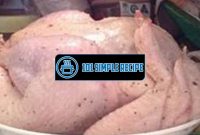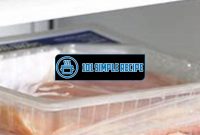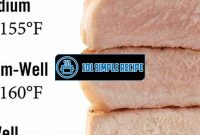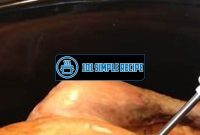Have you ever wondered how long you can safely leave cooked chicken out before it becomes a food safety concern? It’s a question that many people have, especially when it comes to packing lunches, outdoor picnics, or simply forgetting to refrigerate leftovers. Knowing the answer is crucial for avoiding potential foodborne illnesses. In this article, we will delve into the guidelines and factors that determine how long cooked chicken can be left out at room temperature. So let’s uncover the truth and ensure you keep your meals both delicious and safe!
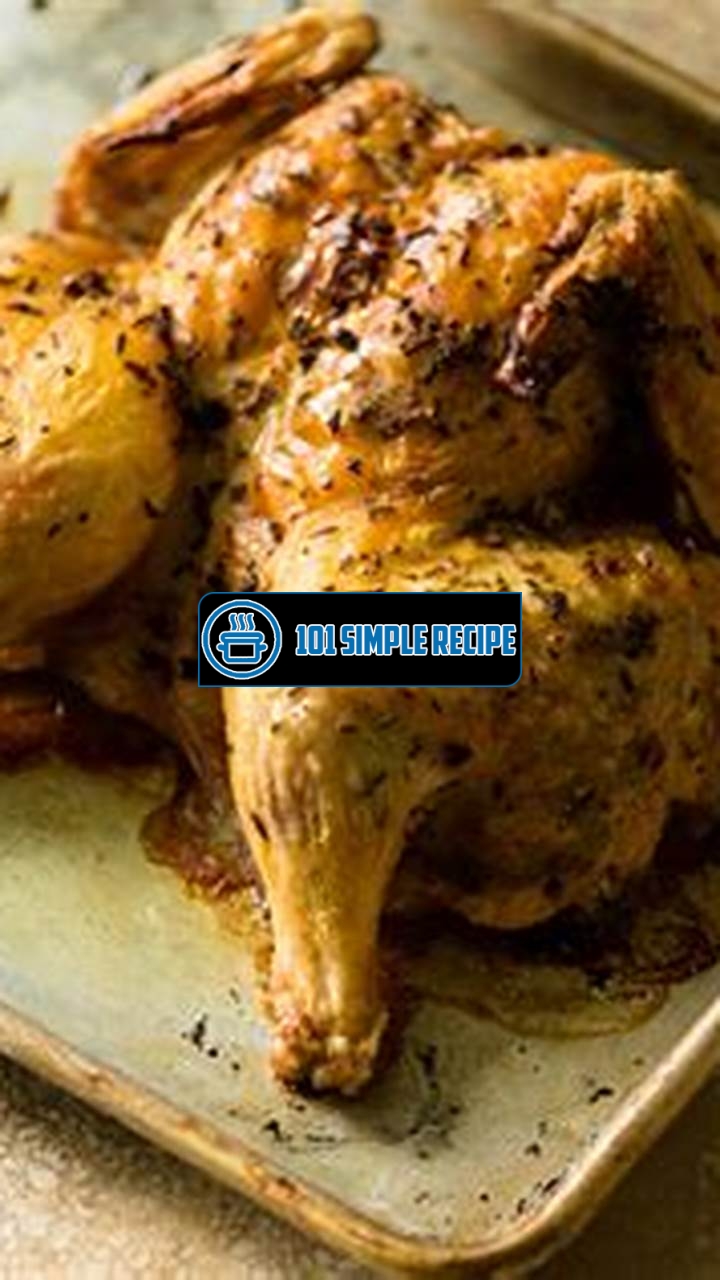
The Importance of Proper Food Storage
Proper food storage is crucial for maintaining food safety and preventing potential health risks. This is especially important when it comes to storing cooked chicken.
Understanding Bacterial Growth
Before diving into the importance of proper food storage, it is essential to understand how bacteria can grow on cooked chicken left out at room temperature. Bacteria, such as salmonella and E. coli, thrive in environments where the temperature is between 40°F and 140°F (4°C and 60°C). This temperature range is often referred to as the “danger zone” for food. When cooked chicken is left out within this temperature range, bacteria can multiply rapidly and pose a significant risk to your health.
It is necessary to handle cooked chicken with caution and ensure it is stored at a safe temperature to prevent bacteria from multiplying. This will greatly reduce the risk of foodborne illnesses and keep you and your loved ones safe. ️
Health Risks of Consuming Contaminated Chicken
Consuming contaminated chicken can result in various health risks, including food poisoning. Symptoms of food poisoning often include diarrhea, vomiting, stomach cramps, and fever. In severe cases, it can lead to dehydration and hospitalization.
The bacteria present on improperly stored cooked chicken can multiply and produce toxins that are harmful to the human body. These toxins can cause gastrointestinal distress and potentially lead to more serious complications, especially in individuals with weakened immune systems, the elderly, and young children. It is, therefore, essential to store cooked chicken properly to minimize the risk of bacterial contamination and subsequent foodborne illnesses.
Guidelines for Safe Food Storage
Follow these guidelines to ensure safe food storage and minimize the risk of consuming contaminated chicken:
- Refrigerate promptly: After cooking chicken, refrigerate it within two hours. This will help to lower the temperature quickly and inhibit the growth of bacteria.
- Use shallow containers: Store cooked chicken in shallow, airtight containers. This promotes rapid and even cooling, reducing the time it spends in the danger zone.
- Label and date containers: Properly label and date containers before storing cooked chicken in the refrigerator. This helps you keep track of when it was cooked and determine how long it has been stored.
- Keep refrigerator temperature below 40°F (4°C): Ensure your refrigerator is set at the appropriate temperature to slow down bacterial growth. Regularly check and monitor the temperature to maintain its effectiveness.
- Discard leftovers within four days: It is recommended to consume cooked chicken leftovers within four days. If leftovers are not consumed within this timeframe, they should be discarded to avoid the risk of bacterial growth.
- Avoid temperature abuse: Avoid leaving cooked chicken out at room temperature for an extended period. If chicken has been left out for longer than two hours, discard it to prevent bacterial contamination.
By following these guidelines, you can ensure safe food storage practices and mitigate the risk of consuming contaminated cooked chicken. Remember, proper food storage is essential for maintaining food safety and preventing foodborne illnesses. Stay vigilant and prioritize the well-being of yourself and those you cook for.
Looking for a sweet treat? Try making our cookie in a mug recipe or peanut butter cups at home.
The Two-Hour Rule
When it comes to food safety, it is important to know how long you can leave cooked chicken out at room temperature before it becomes unsafe to consume. The general rule is known as the “two-hour rule.” According to this rule, cooked chicken should not be kept at room temperature for more than two hours.
This rule is based on the fact that bacteria can multiply rapidly at room temperature, potentially leading to foodborne illnesses. By keeping the time limit to two hours, you minimize the risk of bacterial growth and reduce the chances of food poisoning.
It’s important to note that the two-hour rule applies to cooked chicken that has been left out at room temperature. If the chicken has been refrigerated and is brought to room temperature for serving, the two-hour rule starts from the time it reaches room temperature.
Why Time Matters
The time that cooked chicken spends at room temperature is crucial in determining its safety for consumption. As mentioned earlier, bacteria can multiply rapidly at room temperature, especially in the temperature range of 40°F to 140°F (4°C to 60°C), known as the “danger zone.”
When chicken is left out for an extended period within this danger zone, bacteria such as Salmonella and Campylobacter can multiply to dangerous levels, increasing the risk of food poisoning. These bacteria can cause symptoms like stomach cramps, diarrhea, fever, and vomiting.
By adhering to the two-hour rule, you minimize the time that cooked chicken spends in the danger zone, reducing the risk of bacterial growth and ensuring the chicken remains safe to eat.
Factors Affecting Food Spoilage
Several factors can affect the spoilage of cooked chicken when left out at room temperature. These factors can influence how quickly bacteria multiply and the spoiling process begins. Here are some important factors to consider:
- The temperature of the room: The warmer the room, the faster bacteria can multiply. Higher room temperatures can accelerate the spoiling process.
- The initial quality of the chicken: If the chicken was not properly cooked or stored before being left out, it may spoil more quickly.
- The presence of bacteria: If the chicken was contaminated with bacteria before or during cooking, it can spoil faster.
- The storage conditions before serving: If the chicken was not stored at the proper temperature and allowed to reach room temperature slowly, bacterial growth may have already begun.
Considering these factors can help you determine how long cooked chicken can be safely left out at room temperature before it becomes a potential health risk.
Exceptions to the Two-Hour Rule
While the two-hour rule is a good guideline to follow, there are some exceptions to consider. Certain circumstances may allow cooked chicken to be left out for slightly longer without posing a significant risk. These exceptions include:
- If the room temperature is below 90°F (32°C), you may have an extra hour before the chicken becomes unsafe to consume.
- If the chicken has been properly stored and prepared with the use of preservatives or acidity, it may have a longer shelf life at room temperature.
- If the chicken has been cooked to a higher internal temperature and reaches a level that kills most bacteria, it may remain safe for a longer period.
While these exceptions exist, it’s important to note that they still come with some level of risk. To ensure the safety of cooked chicken, it is always best to adhere to the two-hour rule whenever possible.
If you’re wondering how long you can leave cooked chicken out of the refrigerator before it becomes unsafe to eat, it’s important to follow proper food safety guidelines. While cooked chicken can be left out at room temperature for a short period of time, it is recommended to refrigerate it within 2 hours to prevent bacterial growth.
Risks and Symptoms of Foodborne Illness
When it comes to food safety, it’s important to be aware of the potential dangers of consuming cooked chicken that has been left out for too long. Leaving cooked chicken at room temperature for an extended period can lead to the growth of harmful bacteria, increasing the risk of foodborne illnesses. These illnesses can cause a range of symptoms and can vary in severity.
Foodborne illnesses are typically caused by consuming contaminated food or beverages. In the case of cooked chicken that has been left out, it becomes an ideal breeding ground for bacteria such as Salmonella and Campylobacter. These bacteria thrive in environments with optimal temperatures and moisture levels, making improperly stored cooked chicken a potential hazard.
Common Types of Foodborne Illnesses
There are various types of foodborne illnesses that can result from consuming cooked chicken that has been left out for too long. These illnesses can have different causes and symptoms:
- Salmonellosis: This is one of the most common types of food poisoning and is caused by the Salmonella bacteria. Symptoms may include diarrhea, abdominal cramps, fever, and vomiting.
- Campylobacteriosis: Campylobacter bacteria are often found in poultry, including cooked chicken. Symptoms of this infection may include diarrhea (sometimes bloody), fever, and abdominal pain.
- Staphylococcal food poisoning: Consuming cooked chicken that has been contaminated with Staphylococcus aureus bacteria can lead to this type of food poisoning. Symptoms typically include nausea, vomiting, stomach cramps, and diarrhea.
- Clostridium perfringens infection: This bacteria can multiply rapidly in cooked chicken if it is not properly stored. Symptoms of this infection can include diarrhea, abdominal pain, and stomach cramps.
It’s important to note that these are just a few examples of the common types of foodborne illnesses associated with consuming cooked chicken that has been left out for too long. There are other bacteria and viruses that can also pose a risk.
Recognizing the Symptoms
Recognizing the symptoms of foodborne illnesses is crucial for prompt intervention and treatment. Here are some common symptoms to watch out for:
- Diarrhea: This is a common symptom of many foodborne illnesses, including those caused by consuming cooked chicken that has been left out.
- Abdominal pain: Cramps and discomfort in the abdominal area are often experienced along with diarrhea.
- Fever: Elevated body temperature is a common response to infections caused by bacteria or viruses.
- Vomiting: Nausea and vomiting can also be present in cases of food poisoning.
If you or someone you know experiences any of these symptoms after consuming cooked chicken, it’s important to seek medical attention as soon as possible.
When to Seek Medical Help
In some cases, foodborne illnesses can be mild and resolve on their own within a few days. However, there are situations where medical intervention is necessary. If any of the following conditions apply, it is recommended to seek immediate medical help:
- Persistent symptoms: If the symptoms persist for more than two days or worsen over time, medical attention is crucial.
- Dehydration: Severe diarrhea and vomiting can lead to dehydration. If signs of dehydration, such as decreased urination or extreme thirst, are present, seeking medical help is necessary.
- High fever: A persistent fever higher than 101.5°F (38.6°C) may indicate a more serious infection.
- Abdominal pain: If the abdominal pain becomes severe and is accompanied by other concerning symptoms, medical attention should be sought.
It’s important to remember that everyone’s health and tolerance to foodborne illnesses can differ. If you have any doubts or concerns, it’s always best to consult a healthcare professional for proper evaluation and guidance.
Tips for Safe Chicken Storage
When it comes to cooked chicken, proper storage is crucial for maintaining its quality and reducing the risk of contamination. Here are some practical tips to ensure that your cooked chicken stays safe and delicious:
Proper Cooling Techniques
After cooking chicken, it’s important to cool it down properly before storing it. This helps to prevent the growth of bacteria that can cause food poisoning. To cool cooked chicken quickly and safely, follow these steps:
- Divide the chicken into smaller portions. This allows for faster and more even cooling.
- Place the chicken on a shallow, rimmed tray or plate. Avoid stacking the pieces on top of each other.
- Place the tray in the refrigerator or freezer. If using the refrigerator, make sure the temperature is set at 40°F (4°C) or below.
- Leave the chicken uncovered during the cooling process. This allows the heat to escape and prevents condensation, which can promote bacterial growth.
- Once the chicken has cooled down to room temperature, you can transfer it to airtight containers or wrap it tightly in plastic wrap or aluminum foil before storing it in the refrigerator or freezer.
Important point: Proper cooling techniques are essential to prevent bacteria growth and ensure the safety of your cooked chicken. By cooling the chicken quickly and storing it at the correct temperature, you can reduce the risk of foodborne illnesses.
Utilizing Airtight Containers
Choosing the right containers for storing cooked chicken is another important aspect of safe chicken storage. Airtight containers help to maintain the quality, flavor, and safety of the chicken. Here’s how you can utilize airtight containers effectively:
- Use containers made of glass, plastic, or stainless steel. These materials are durable and do not react with the chicken.
- Ensure that the containers have a tight-sealing lid to prevent air and moisture from entering.
- Prioritize containers that are specifically designed for food storage, as they are made to maintain freshness and prevent cross-contamination.
- Label the containers with the date of storage to keep track of the chicken’s freshness.
Important point: By utilizing airtight containers, you can prolong the shelf life of your cooked chicken and prevent any contamination from external sources. This will help to maintain its quality and taste.
Maximizing Refrigerator Lifespan
Your refrigerator plays a crucial role in chicken storage. Keeping your refrigerator in optimal condition ensures that the chicken stays fresh and safe. Follow these tips to maximize the lifespan of your refrigerator:
- Set the refrigerator temperature to 40°F (4°C) or below to inhibit bacterial growth.
- Regularly clean and sanitize the refrigerator to eliminate any potential contaminants.
- Check the temperature regularly with a fridge thermometer to ensure it remains within the safe range.
- Avoid overcrowding the refrigerator, as proper air circulation is important for maintaining the temperature.
- Keep raw chicken separate from cooked chicken and other foods to prevent cross-contamination.
Important point: By maximizing the lifespan of your refrigerator and maintaining proper storage conditions, you can ensure the safety and quality of your cooked chicken.
For more delicious recipes like garlic bread sticks or kaiser rolls, check out our website.
When in Doubt, Discard
Trusting your instincts is crucial when it comes to the safety of your food, especially when it comes to cooked chicken. If you have any doubts about its freshness or if it has been left out for too long, it is best to err on the side of caution and discard it. This is because cooked chicken can quickly become a breeding ground for bacteria if not stored properly or left at room temperature for an extended period.
Tip: When in doubt, it’s better to be safe than sorry. Don’t take any chances with your health!
Signs of Spoiled Cooked Chicken
Being able to recognize the signs of spoiled cooked chicken can help you determine whether it is still safe to consume or if it should be thrown away. Here are some common indicators that your cooked chicken may have gone bad:
- Unpleasant odor: If your cooked chicken has a foul or rancid smell, it is a clear sign that it has spoiled.
- Unusual texture: Cooked chicken that feels slimy or sticky to the touch should be discarded as it indicates bacterial growth.
- Discoloration: Any significant change in the color of the chicken, such as the appearance of green or gray spots, is a sign of spoilage.
- Mold: If you notice any mold on the surface of your cooked chicken, it is unsafe to eat.
Note: It is important to trust your senses and not consume cooked chicken that shows any of these signs of spoilage.
Understanding Expiration Dates
Expiration dates can provide helpful guidance when it comes to determining the freshness of your cooked chicken. However, it is important to understand how these dates are calculated and what they actually mean.
Most expiration dates on cooked chicken refer to the time when the chicken will maintain its optimal quality, rather than its safety. Typically, cooked chicken can be refrigerated for up to four days before the quality starts to decline. Beyond this point, it is still generally safe to eat, but the taste and texture may be compromised.
Tip: If your cooked chicken is past its expiration date but still appears and smells fresh, you can use your judgment to decide whether it is safe to consume or not. Trust your instincts!
Safe Practices for Reheating Leftovers
When reheating leftover cooked chicken, it is essential to follow safe practices to minimize the risk of foodborne illnesses. Here are some guidelines to keep in mind:
- Thoroughly reheat: Ensure that the chicken is heated all the way through, reaching an internal temperature of at least 165°F (74°C) to kill any bacteria that might be present.
- Don’t leave it out for too long: If you’re reheating cooked chicken, don’t let it sit at room temperature for more than two hours. Bacteria can start to grow rapidly at temperatures between 40°F (4°C) and 140°F (60°C).
- Avoid multiple reheating: It is best to reheat chicken only once to minimize the risk of bacterial growth. If you have leftovers after reheating, store them in the refrigerator promptly.
Note: Following these safe practices will help ensure that your reheated cooked chicken remains delicious and safe to eat!
Frequently Asked Questions
Here are some common questions about how long you can leave cooked chicken out:
| No. | Questions | Answers |
|---|---|---|
| 1. | How long can cooked chicken be left out at room temperature? | Cooked chicken should not be left out at room temperature for more than 2 hours. It is important to refrigerate leftovers promptly to avoid the risk of foodborne illnesses. |
| 2. | Can you eat cooked chicken that has been left out overnight? | No, it is not safe to eat cooked chicken that has been left out overnight. Bacteria can multiply rapidly at room temperature, increasing the risk of food poisoning. |
| 3. | How long can cooked chicken stay out if kept in a warmer? | If cooked chicken is kept in a warmer with a temperature above 140°F (60°C), it can be safely kept for no more than 2 hours. After that, it is recommended to refrigerate the chicken to prevent bacterial growth. |
| 4. | What are the signs of spoiled cooked chicken? | Signs of spoiled cooked chicken include a strong, foul odor, slimy texture, and a change in color. If you notice any of these indicators, it is best to discard the chicken to avoid foodborne illnesses. |
| 5. | Can reheating cooked chicken kill bacteria? | Yes, reheating cooked chicken to an internal temperature of 165°F (74°C) can kill most bacteria and make it safe to eat. However, it is still important to follow proper food storage and handling practices to minimize the risk of contamination. |
| 6. | What is the best way to store cooked chicken? | The best way to store cooked chicken is to refrigerate it within 2 hours of cooking. Place the chicken in an airtight container or wrap it tightly with foil or plastic wrap before refrigerating to prevent moisture loss and contamination. |
Thanks for Reading!
We hope this article has provided you with valuable information about how long you can leave cooked chicken out. Remember, always prioritize food safety to avoid potential health risks. For more informative articles on various topics, visit us again later. Stay healthy and enjoy your meals!
Jump to Recipe
How Long Can You Leave Cooked Chicken Out

Find out how long you can safely leave cooked chicken out at room temperature. Learn about the risks of leaving chicken out and proper food storage practices.
- 4 boneless (skinless chicken breasts)
- 2 tablespoons olive oil
- 1 teaspoon salt
- 1/2 teaspoon black pepper
- 1 teaspoon paprika
- Preheat the oven to 375°F (190°C).
- Place the chicken breasts on a baking sheet. Rub them with olive oil, salt, pepper, and paprika.
- Bake the chicken in the preheated oven for 25-30 minutes, or until the internal temperature reaches 165°F (74°C).
- Remove the chicken from the oven and let it rest for a few minutes before serving.

